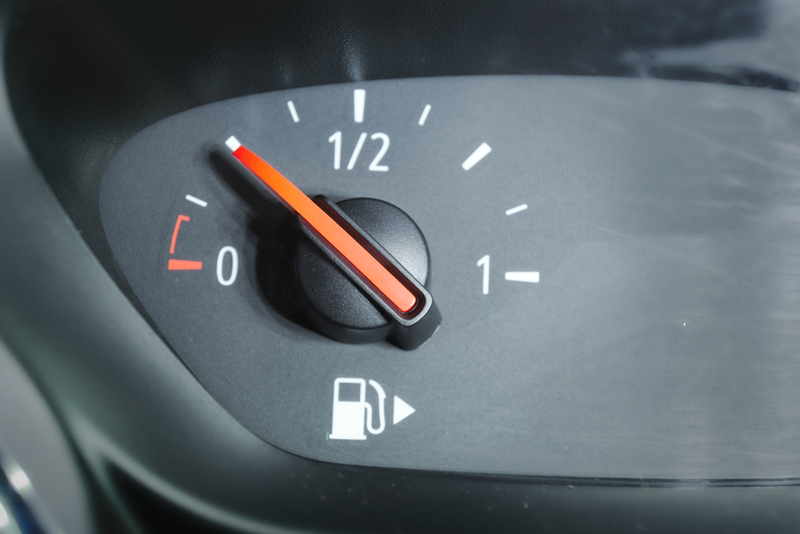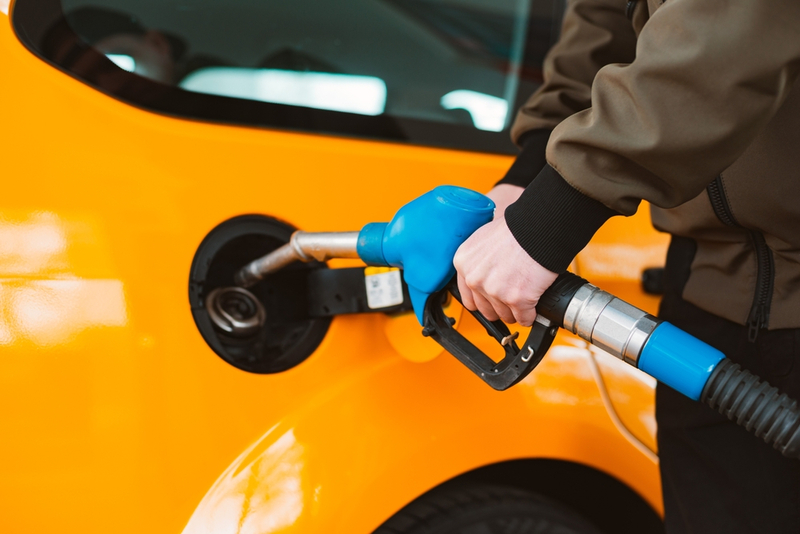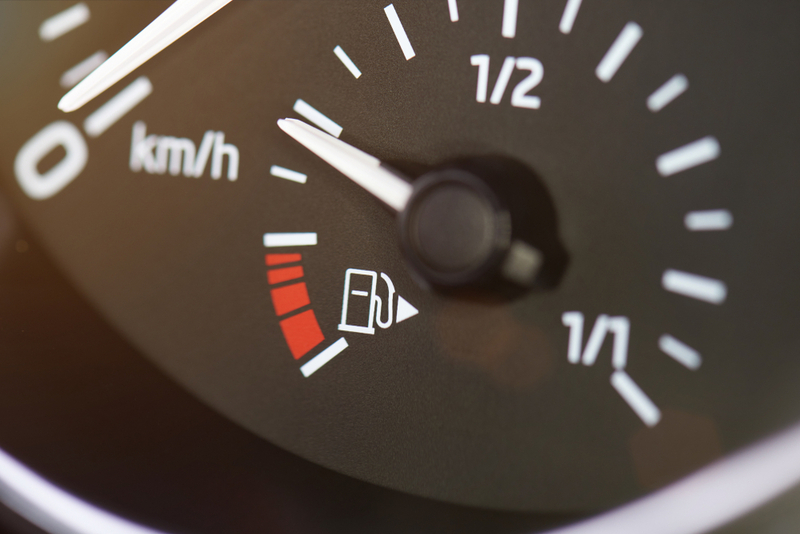How many miles can A quarter of a tank go? Is getting to a quarter tank advisable?
Some experts have taken the pain of doing experiments and concluded that it is advisable not to let your fuel drop low the quarter level of the tank.
One of the reasons for this conclusion was that sediments might settle at the base of the fuel tank and contaminate the fuel line if the fuel drops below the quarter level.
This article will explore how long a quarter tank can go as well as help broaden your knowledge of how the fuel tank works and how much fuel must constantly be in your tank to ensure safety and more
Let’s get started!
Operating Principle of Gas Gauge?
Your fuel tank gauge is an instrumentation device that helps you know the exact fuel level in the fuel tank. However, most people may argue that the fuel tank gauge does not accurately represent the gas in your fuel tank.
The gas gauge works similarly for every vehicle; however, different automobile brands have tweaked their fuel gauges to please car owners psychologically.
If you are an observant driver, you might have noticed that the fuel gauge does not increase continuously and steadily while filling up your fuel tank at the filling station.
Also, you might have noticed that when driving, the fuel gauge does not reduce at a consistent speed; at times, it speeds up while at the middle level and slows down when it gets to the lower levels.
Understanding how your gas gauge works is very important as it will give you a better understanding of what a full tank is and what an empty tank means. You also get to understand the movement of the gauge itself.

Gauge Movement
Without the proper knowledge, most people will believe that the movement of your fuel gauge is accurate; however, you should know that it has been tweaked by the manufacturers to depict high fuel economy.
Observant drivers will notice the fuel gauge pointer moving at a reduced speed while dropping from full-time to 3/4 of a full tank and get faster when dropping from 3/4 tank to 1/2 tank. The fuel gauge maintains its speed dropping from half tank to quarter tank, then gets slower once it hits the quarter tank mark.
Usually, whenever anyone sees their fuel gauge at a quarter tank, they are moved to want a refill at a filling station. However, drivers may not have the luxury of a filling station being close by, but not to worry, a quarter-tank can take you until you get to the next station.
Also Read: What Happens if You Overfill Your Gas Tank? (Explained)
Empty Tank Gauge Reading
The fuel gauge pointer usually reaches the lowest level on its graduated scale, and we expect our car to stop running, but it continues running for a long time. At times we might even reach the next filling station.
You might think this is a stroke of luck, but you must understand that this is a safety feature designed to give you a lifeline to prevent you from being stranded due to an empty tank.
You must also understand that the entire volume of gas in your vehicle is not only in your fuel tank; some fuel system components still have some gas in them, including the fuel line, the carburetor injector nozzles, and the fuel pump.
These fuel occupying other parts of the vehicle instead of the fuel tank are not usually accounted for by the sensors measuring the fuel level in your fuel tank and can give you an extra mile.
Full Tank Gauge Reading
Finally, when you visit the filling station to refill your gas tank, you might want to have a full tank after leaving the fuel station. Therefore if you fill the gas tank to the brim, your fuel gauge pointer will indicate the maximum limit on the gauge’s graduated scale.
If you’re not observant enough, you may not notice that after the pointer hits the maximum position, a few gallons still enter the tank before the fuel tank becomes filled up to the brim.
You can confirm this by observing the gauge while driving after some time. You will notice that the fuel gauge remains at the maximum point without dropping even a millimeter.
You might be confused about why this is happening, but its reasons are simple. Most manufacturers have concluded through research that car owners feel more confident about their vehicle’s fuel economy after experiencing no drop in fuel levels.
Most car owners will be happy that their vehicle doesn’t consume much gas.

How Many Miles Is A Quarter Tank of Gas?
There are different parameters to consider before estimating how long a quarter tank of gas will last for your car. One of those parameters is your driving style and and the conditions of the road.
Also, you must also consider the size of your tank; the larger the fuel tank, the higher the fuel consumption of the car. However, that’s not always the case.
Below are some estimations of how long a quarter tank of gas will last for several vehicles.
Toyota Prius: If you have a quarter of a tank on your Toyota Pirus, you can expect to get about 200 miles, this consist of 160 miles of the gasoline and 25 miles on electric power
Honda Accord: On Honda Accord, a quarter tank is about 3.7 gallons, which can take you to a maximum of 150 miles and a minimum of 120 miles.
Ford F-150: A quarter of a tank on the Ford F-150 is about 5.75 gallons, and this can take you up to 130 miles and a maximum of 150 miles.
Ford Mustang: If you are using a Ford Mustang, a quarter tank could take you up to 100 miles. You really have to be careful with your gas pedal to achieve this number.
Toyota Tundra: For users of Toyota Tundra, you could get up to 140 miles and a minimum of 120 miles with a quarter tank, which is just about 5.6 gallons of fuel.
What Happens If Your Fuel Get Too Low
The fuel stored in the reservoir of any fuel tank is not free of impurities; most times, these impurities sediment at the base of the vehicle’s fuel tank.
When the tank’s fuel level drops too low, sediments start flowing into the fuel pumps, contaminating your fuel system and combustion chamber.
Some sediments classified as impurities include water jelly roast and other materials that might be suspended in the fuel stored in the tank.
Fuel Pump Reaction
Another major effect of letting your fuel get too low is the fuel pump’s reaction to extremely low fuel levels in the fuel tank.
There are two major reactions a fuel pump displays are;
- First, the fuel pump can react by overheating. Any fuel pump not effectively cooled down while working will overheat and not perform at its optimal capacity and will cause poor fuel efficiency for your vehicle. However, you should know that the fuel tank’s actual fuel level determines the cooling rate.
- Second, the fuel pump may react by sucking in air bubbles. The fuel pump must be fully submerged in the fuel to work effectively. In most vehicles, by the time the fuel in the fuel tank reaches the quarter-level mark, the fuel pump will no longer be fully immersed in The Fall, and this can cause air bubbles to be sucked in with the fuel reducing the volume of fuel reaching the combustion chamber and affecting the quality of energy produced from the internal combustion engine.
Damage to your Pump
In addition, driving constantly with low fuel levels in your tank can also damage your pump and cause it to malfunction. Here are some symptoms that will let you know that your fuel pump is going bad;
- When your vehicle jerks while driving on a smooth road
- Overheating of your very cool engine is also another symptom to look out for
- Reduction in fuel mileage
- Hard starting caused by fuel not reaching the engine
Finally, one last effect of letting your fuel get too low occasionally is a damaged filter. The fuel filter is located between the engine and the fuel pump, ensuring that clean fuel gets to the engine from the fuel pump.
Fuel Filter will go Bad
The fuel filter will go bad if it becomes clogged with sediments sucked in by the fuel pump. Here are some signs that your fuel filter is going bad;
- Loss of engine power
- Engine shaking while the vehicle idles
- Vehicle stalling while driving
- Hard starting
Ensuring that your fuel tank does not drop below the quarter mark on your fuel gauge will ensure your fuel pump and fuel filter remain safe from damage; however, if you’re experiencing a complication, employ the services of an expert.
Also Read: Worst Things to Put in a Gas Tank (Highly Risky!)
Frequently Asked Questions – A Quarter of a Tank
What does 1/4 of a tank look like?
The closest line to the bottom line on your fuel gauge is a quarter of a tank.
Is it bad to have less than a quarter tank of gas?
Professionals suggest letting your fuel level drop below a quarter tank is dangerous.
Does overfilling your gas tank hurt your car?
Overfilling your fuel tank can cause liquid fuel to damage your cabin filter or charcoal canister, thereby hurting your car.
Conclusion – A Quarter of a Tank
Having enough fuel in your fuel tank is a flex every car owner will love to have; however, sometimes, you might be far away from a filling station, and your fuel levels will drop. In this situation, it is advisable not to allow your fuel level to drop below a quarter tank as it can cause problems for your engine and other components in the vehicle.

